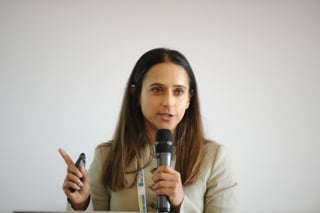National Grid’s fleet manager Lorna McAtear has used the changes to working practices caused by Covid-19 as an opportunity to rethink employee mobility.
“I've flipped the Covid challenge on its head and turned it into an opportunity to get my HR directors to step back and look at how we do the reward packages, and how we need to look at the future for our employees,” McAtear told attendees at the recent virtual Fleet200 Executive Club meeting.
Ultimately, McAtear (pictured) would like to introduce the concept of Mobility as a Service (MaaS) but the first step is to “stop thinking of company cars in the traditional way with mileage limits” because they can encourage “the wrong behaviours”.
The traditional model is for drivers doing 10,000 miles to have a company car but McAtear believes any drivers who have had to do business journeys during the Covid-19 pandemic are the true ‘essential users’.
On its car fleet, National Grid has 206 pure electric cars, with another 125 on order (as at the end of August) and 559 plug-in hybrid electric vehicles, up from just seven electric vehicles on the fleet when McAtear joined the company in August 2019.
National Grid is “close to having” 60 pure electric commercial vehicles, according to McAtear, with 50 of them “still in the build process”.
Making the items of plant and HGVs zero emission, however, is a “longer term journey”, she said.
As well as increasing the number of electric vehicles on the fleet, McAtear is progressing her MaaS plans by working with the individual teams that run the rewards packages at National Grid to look at travel poilices and manage the travel contracts to align the contract expiry dates.
This will allow them to “start to pull this together as a mobility solution rather than the individual components that they currently are”, she said.
> The above was shared with Fleet News at the virtual September meeting of the Fleet200 Executive Club.





















Login to comment
Comments
No comments have been made yet.